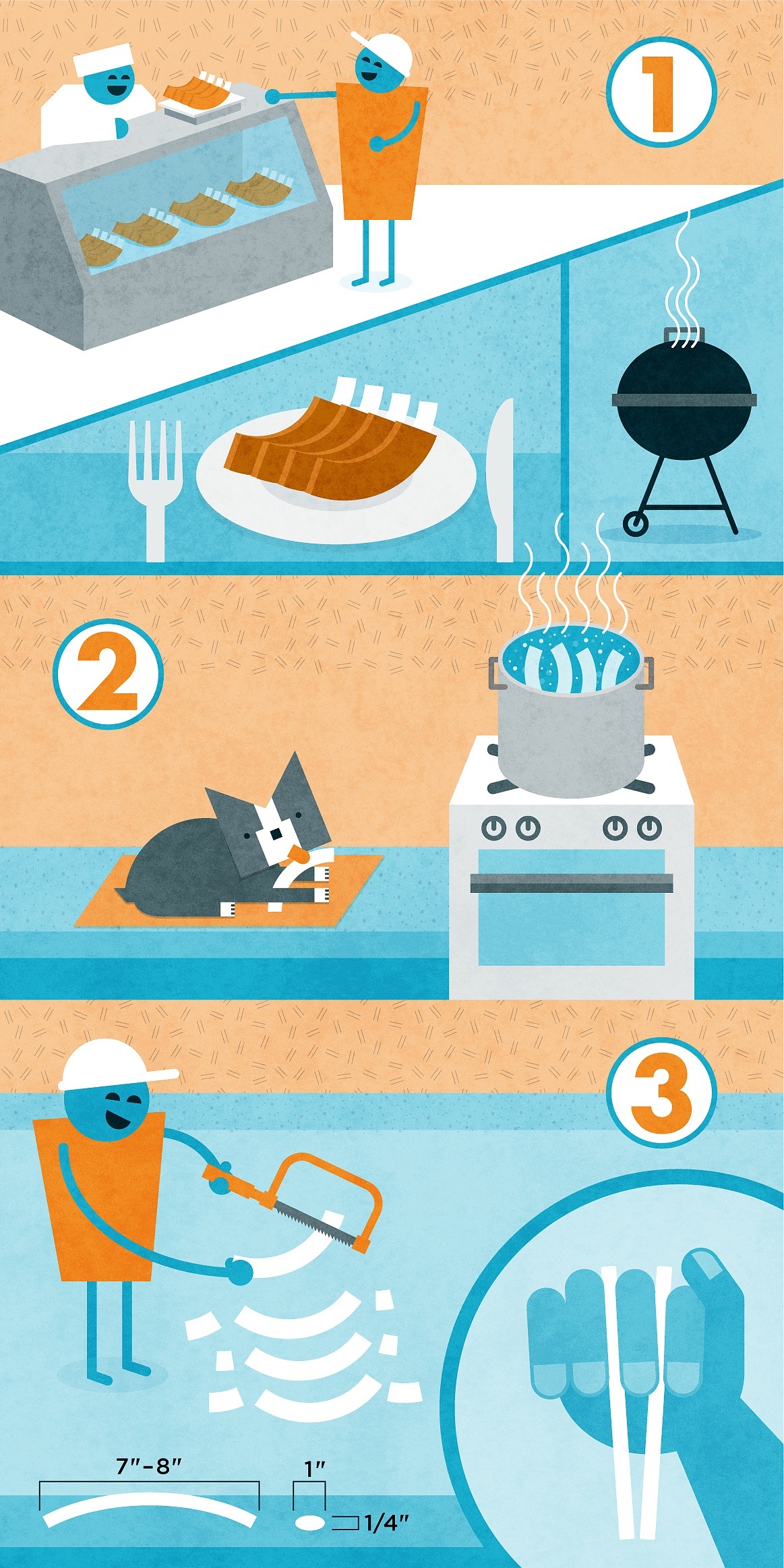Bones may have been the earliest manmade musical instruments, and the skills have rattled down the ages through Egypt, Rome, England, and Ireland to 19th-century American vaudeville and minstrel shows. Rhythm bones still chatter away like country castanets in several genres, including ragtime, bluegrass, and zydeco. Make your own set (traditionally a pair for each hand) and enjoy a hearty meal as well.

1. Cook
At your supermarket, buy beef “short ribs” (not pork or lamb). These are cut from the “plate” section where the ribs are slimmer, well away from the backbone. You want 4 ribs that are 7″–8″ long, about ¼” thick at the center cross-section, and 1″ wide. Your butcher may think you’re being entirely too picky, but ignore the glares and rude remarks. Cook per Grandma’s instructions. Don’t forget to eat your veggies on the side.
2. Clean
You could loan the leftover ribs to your dog for cleaning (probably 2–3 hours for a Chihuahua, maybe half an hour for a German shepherd, or 20 seconds for a hungry pit bull), then bleach them in the sun for a week or two. Or you can boil them until scraps clean off easily and dry them well in a 150°F oven for an hour.
3. Cut
When cool, hacksaw to length, then file or sand rough edges. Carve your initials near one end of each bone.
Now Make Some Music!
Now roll them bones. Watch YouTube videos to learn how to play; search for Dom Flemons (beginner class, watch below), James Yoshizawa (expert tutorial, also below), and David Holt (songs and stories).


Practice diligently. Then surprise the folks at the local karaoke pub with your expertise. Take a bow to the applause. Who knows? You might graduate to playing the soup spoons, the donkey jaw, or the claquette (all actual instruments).
Alternatively, you can make rhythm bones from almost any solid wood, including cherry, maple, walnut, boxwood, and red cedar. (Each wood has its own tone: pine is mellow and muted, ebony is sharp and loud, rosewood or teak produce a high-pitched click.) All you need is a band saw, a padded vise, a wood file or rasp, and sandpapers from rough to very fine. Hand-rub or electric-buff with beeswax to finish.












